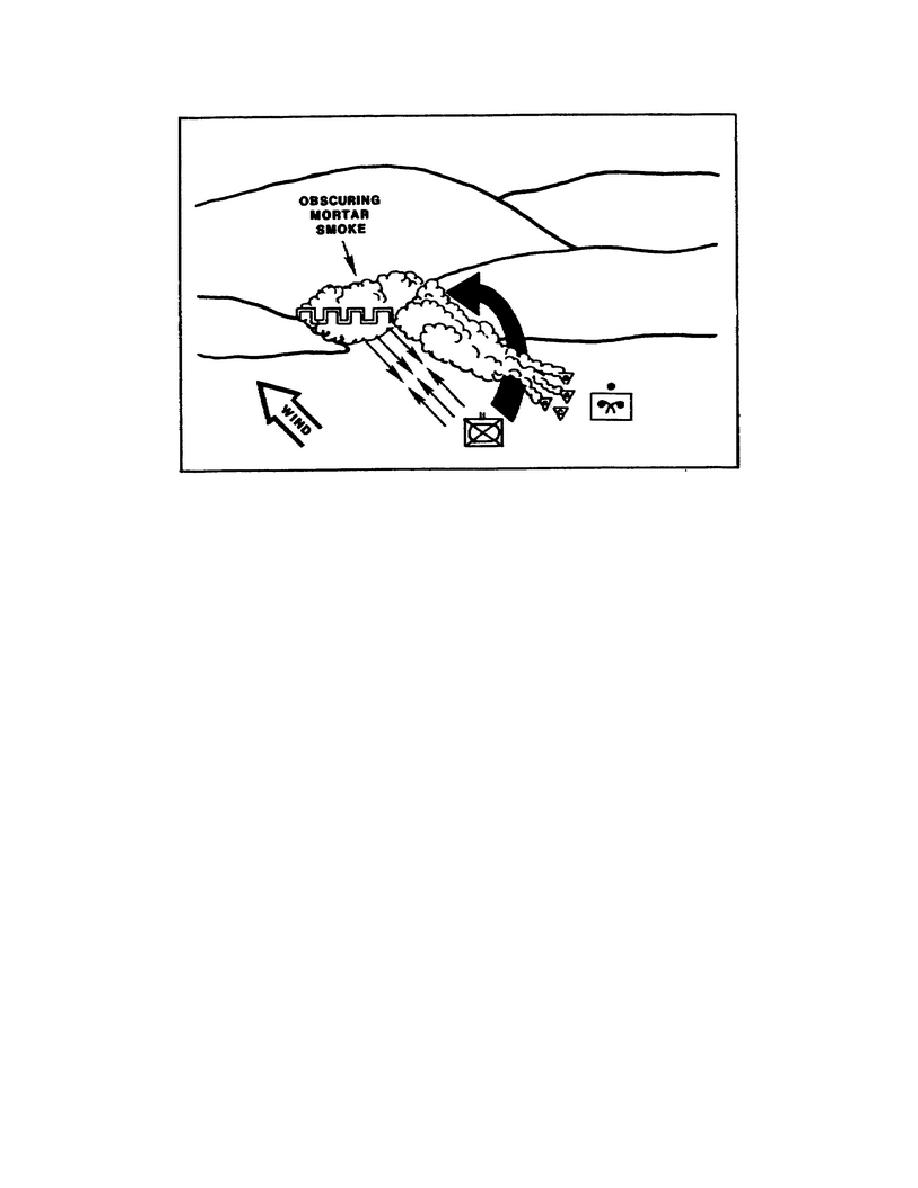
Figure 15. Offensive use of smoke.
In the defense, smoke units operate in the covering force area, the main battle area, and the rear
area. They produce smoke to conceal friendly unit locations, screen friendly maneuver, and disrupt
enemy offensive operations.
Smoke supports defense by --
Preserving forces essential to the mission (reducing personnel and equipment losses).
Gaining time for other activities by slowing and disrupting enemy movement.
Forcing the enemy to mass and thus provide a lucrative target. Reduced battlefield observation
forces the enemy to close up normal tactical formations to maintain effective command and control.
The covering force battle may be intense and highly mobile. Therefore, if the smoke units know
they will return to battle, they may remain mounted to react to constantly changing situations. Hasty
smoke operations are employed early in the covering force battle to evade antiarmor weapons.
Deliberate smoke operations are employed later in the covering force battle.
If winds are favorable, smoke units stay near the forward line of troops (FLOT). They usually
have the mission of producing a smoke screen between the advancing enemy forces and the covering
force. The smoke screen helps to slow and confuse the attackers, aids the withdrawal of the covering
force, and helps to silhouette enemy targets as they exit the screen. Smoke gives the covering force
more time to conduct a passage of lines. It also gives commanders in the main battle area more time to
refine their defense plans.
Figure 16 shows the use of smoke in defensive operations by screening the forced passage of lines.
24



 Previous Page
Previous Page
